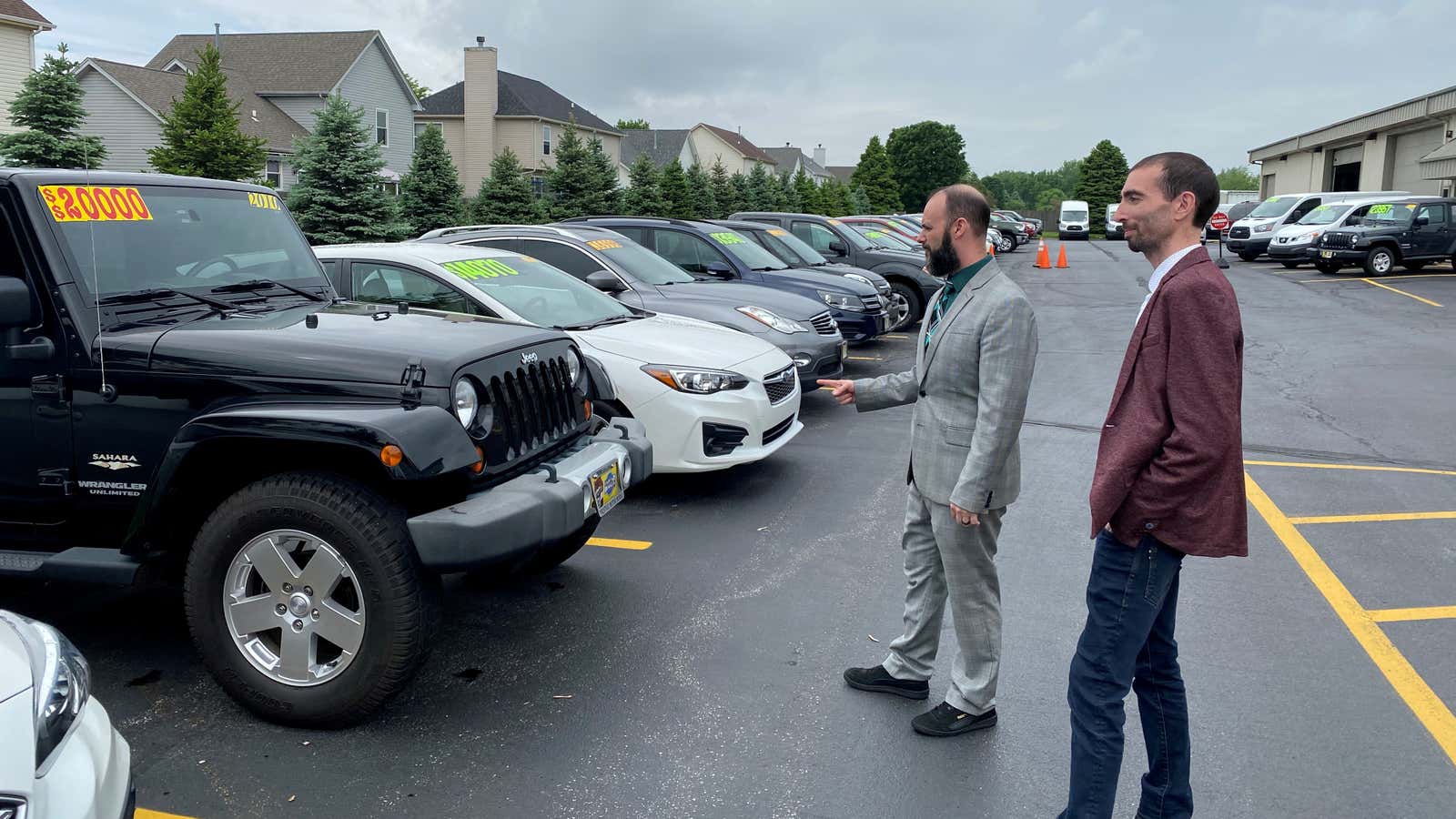The US Consumer Price Index hit its highest point since 2008 today, reporting 5.4% year-over-year inflation and renewing concerns that the US recovery is driving up the cost of living at an unsustainable rate.
But inflation hawks still lack a clear narrative that explains how this high rate will become permanent. The debate over the pace of the US recovery and whether it is overheating the economy is driven by an unusual set of circumstances—a strange, pandemic driven recession; an unprecedented government response; and a recovery proceeding at different paces in different places.
Seeing this price index exceed economists’ forecasts is a cause for concern, but I keep coming back to the question former Federal Reserve economist Claudia Sahm asked rhetorically in an interview a few weeks ago: “Explain to me where the persistent change, the structural change is going to happen so that we move from decades of either not being at 2% inflation or not being at full employment, [and] suddenly the whole world changes and we move decades back to 1970?”
For example, the big story in today’s CPI news is the continuing surge in used-car prices, which made up more than one-third of the growth in top-line inflation. We have some understanding of why that is: A shortage of new cars driven by pandemic supply chain kinks, the efforts of car rental companies to rebuild their fleets, and drivers who put off auto purchases last year.
If the cost of used cars are driving price increases, does it make sense that the Fed deciding to slow its purchases of financial assets would meaningfully increase the supply of used cars? Tapering—the term of art for slowing down those purchases—or, more drastically, rate cuts, could pull demand out of the economy—but is that the ideal thing to do when 5.9% of Americans who want to work are still unemployed?
The Federal Reserve’s inflation gamble
That choice illustrates why Federal Reserve chair Jay Powell and the Biden administration are still betting this inflation will be transitory, and will pass as businesses and consumers adapt their supply chains and habits to the re-opening economy. The cost of lumber, a major driver of the inflation story, has fallen back to last year’s prices. Government relief spending, particularly on expanded unemployment benefits, will continue to decline as people return to work. The White House is emphasizing the transient message:
Policymakers have other reasons to believe the numbers will begin to come down: Many of the other price increases are also from pandemic-affected industries, including air travel and hotels, that are returning to normal. Base affects are still at play—in June of last year, inflation was just .7%, compared to 1.l7% in 2019, which exaggerates the year-over-year change. The bond market, at least so far, has received this morning’s news with equanimity.
And perhaps most importantly for inflation watchers, we aren’t seeing wages try to keep up with prices—average hourly earnings increased just 0.3% from May to June, which combined with rising prices led real earnings to fall 0.5%. That suggests the dreaded wage-price spiral isn’t arriving anytime soon—but it also highlights that unchecked price growth diminishing people’s purchasing power.
As the US continues to claw its way out from the pandemic recession, the Fed will have to walk this tightrope carefully.
